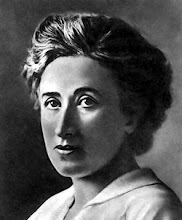The Murdoch press has come out with all guns blazing on the issue of licence fee rebates for the FTA networks.
ichael Stutchbury writing in the Oz labels it "corrupt" because it is a supposedly "scret" deal. The sin being that;
Neither the Prime Minister nor Conroy have revealed what the commercial broadcasters agreed to provide in return for paying less to use their publicly owned spectrum.
It really is a piece of nonsense framed like that. The broadcasters clearly made the point that they needed either a reduction in licence fees or a reduction in ocal content quotas. The Government chose the former. The fact there has been no writte commitment about local content related to the rebate could well be due to it being prohibited under the US-Australia Free Trade Agreement (the other FTA).
Meanwhile Terry McCrann has written a diatribe that shows he is more a tool of Murdoch propaganda than serious business journalists. He tries to claim that the only reason Rupert Murdoch doesn't own a Free to Air network is because he wasn't a media mogul whe the licences were handed out in the 1950s.
He forgets to mention that the only asset still held by its original owners is Nine Sydney and Melbourne, both of which were sold then bought back. He doesn't mention that Rupert used to own TV stations but had to dispose of them under the media cross ownership laws when he acquired HWT. He doesn't mention that News and Telstra each bought 15% staks in Seven when it was re-floated after receivership.
That party ended when Seven decided to join Optus and Nine in Pay TV anyway.
And Kerry Stokes is an even more recent media mogul than Rupert. He bought his entire stake in Seven on the open market. CanWest has been a ready seller over at TEN for some time. Rupert can't buy it for a whole host of reasons, but mostly because he doesn't really want to.
Meanwhile at Crikey, Bernard Keane repeats the line that the free to air networks were "given" 7 MHz of spectrum for the purposes of digital conversion. He qualifies this by saying they didn't have to "bid for it". The vast bulk of users of spectrum pay for it by administratively determined licence fees, not by auction.
The FTA networks pay for their spectrum in licence fees that are a progressive scale on revenue up to a rate of 9%. It might have been reasonable to think of the additional channels as additional licences - but they weren't. That actually means the networks pay more because they are paying 9% of the small revenues they get from the multi-channels rather than the lower rate the revenues would qualify for o their own. Issuing an additional licence would have raised less money not more.
The main users who have acquired spectrum through auctions ("bidding for it") are the mobile networks. Not all their spectrum was acquired that way - they pay a flat licence fee for the 900 MHz spectrum originally used for GSM. If you project mobile industry revenues forward at the same growth rate as today a licence fee of less than 3% of revenue would have raised the same amount as the fees raised by auction.
So let's just get the facts straight. The FTAs are paying for their (temporary) digital allocation and they are paying more for it than those people who did buy spectrum at auction.
Meanwhile Telstra and News pay nothing for their use of the airspace through which the Cable TV signal is distributed despite the attempts of some local councils to charge rates for it.
Wednesday, February 17, 2010
Subscribe to:
Post Comments (Atom)




No comments:
Post a Comment